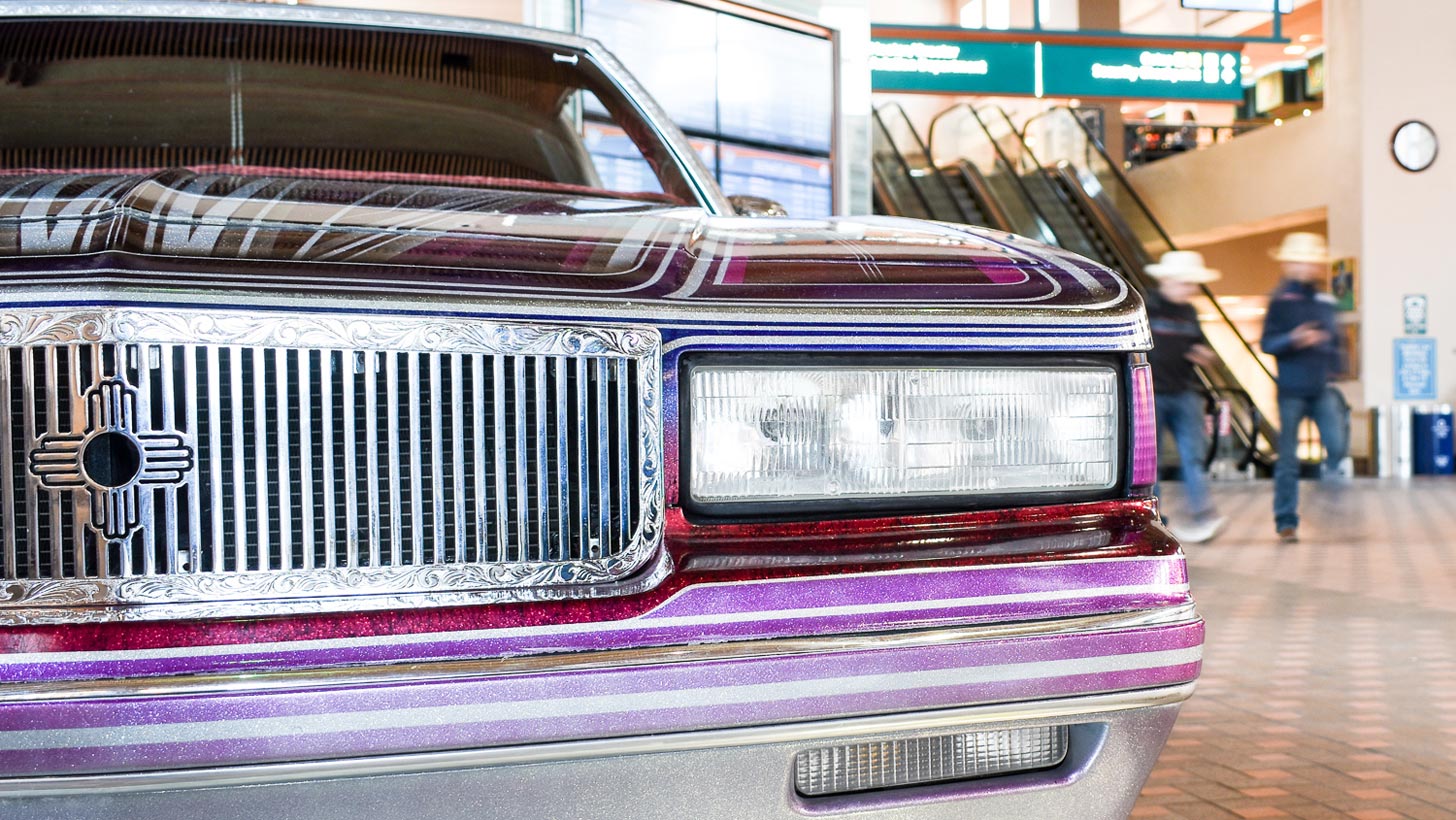Max Baptiste is the first curator that Albuquerque’s airport (affectionately known as the Albuquerque International Sunport) has had on staff in 13 years. Since beginning the job in October of last year, Baptiste has taken a contemporary approach (rarely seen in smaller airports) to exhibiting art to an audience of five million annual travelers in a state with a population of just over two million. He is passionately committed to broadening the scope of what people think of as New Mexican art, and to that end, he has brought lowriders into the airport. It is a bold first step, and one that’s not without its detractors, but Baptiste believes that it is an opportunity to educate the traveling public about who we really are as New Mexicans. The result has been overwhelmingly positive, as evidenced by bag-wielding travelers pausing and puzzling over the exhibit of cars, motorcycles, bikes, toys and photographs that are familiar and exotic at the same time.Weekly Alibi sat down with curator Max Baptiste to find out more about the lowrider exhibit, the challenges of showing art at the airport and what we can expect in the future. The following is an edited version of that interview.Weekly Alibi: Why have art at the airport?Max Baptiste: Lots of reasons. This is one of the most visited buildings in New Mexico, so it is a great place for people who have never been here to engage with who we are as a culture. It’s a great place to showcase local artists. And at the end of the day, it drives revenue. If people feel like they are in a spot where they have something to enjoy, they stick around, as opposed to just walking straight through.I’ve seen people coming off flights late at night who walk up to the photographs and visibly relax. Did you intend for the exhibit to welcome New Mexicans home?Absolutely. Pride in place is a big part of what I do. When we think of New Mexico art, it’s a very narrow [focus on] Santa Fe, Taos; to me there is so much depth in the art community here in New Mexico that hasn’t really had good representation. I want to explore more. We have Native American art. Hispanic art. Contemporary street art. Graffiti. I think we have a really broad spectrum, yet the art community hasn’t quite caught on to what that means. Why lowriders?I grew up in Taos and my dad lived in Santa Fe. Every other weekend, my dad would pick me up and we would go to Santa Fe. That would usually be on Friday nights and we would drive through Espanola. That was crusing in the mid-to-late ’90s. I was just floored by not only the amazing art of the lowrider, but the family and the community around it. It would bring families out. It would bring every type of person out to engage with each other. I’ve always loved not just the vehicles themselves, but the culture around it. I love that they give opportunity to people. Growing up in a poor neighborhood, not a lot of people have a lot of opportunity where at a young age building a bicycle not only gives you the opportunity to be creative, but it also gives you the opportunity to participate. I think both of those things are really important. These exhibits will rotate? At the end of August or the beginning of September, it will rotate. What are some of the challenges of showing work at the airport versus a traditional gallery space?There are quite a few, actually. The big one is security. We are a federal building, so security is number one always. Galleries don’t have 5 million people coming through them a year that aren’t there specifically to look at art. Another major difference that I’ve found goes along with that. People are not really here to look at art. A lot of people aren’t experienced with art. We have a Robert Reynolds piece here. He uses really thick oils that have a lot of texture and one day, I found a young gentleman just picking at it. I guess security is an issue.It is, absolutely, but at the same time, it allows us to educate. That is the big part, specifically with the lowriders. I heard so many different reasons for pushback [to creating the lowrider exhibit]. Gang culture and just misconceptions about what it is. I think education is a really key point we can use this space for. Since it is high traffic and high volume, it is an opportunity to teach about who we are, how we do things, how art is made and how our community is.What’s next?We are working on a projection mapping installation. We are working on engaging galleries around the state to have some representation here. And we are working on a few things that are just at the beginning of the works that we can’t get into. That is another difference [from traditional gallery spaces] because there are so many things to check off a list, we don’t operate as quickly as a gallery can.Galleries are notorious for operating quickly.We just have to make sure that everybody is on board.
Lowriders and Hot Rods:
Car Culture of Northern New Mexico
Albuquerque International Sunport Great Hall
On display through December 2019




